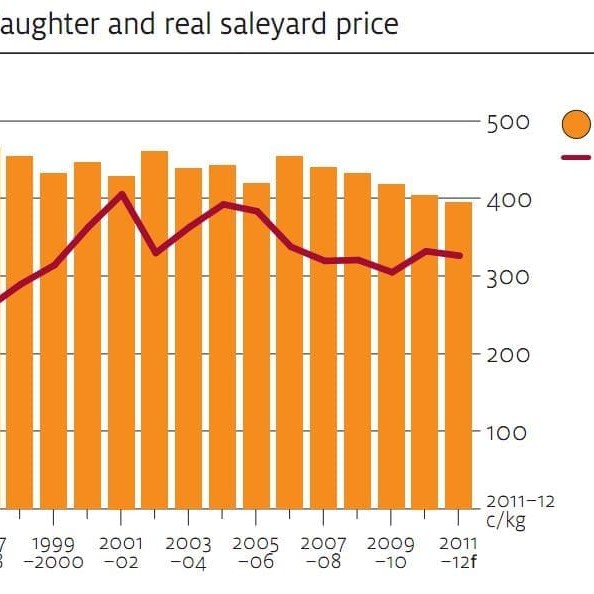 Australia’s national commodity forecaster has taken an optimistic position on the size of the national herd, forecasting favourable seasonal conditions and the recent shift towards herd rebuilding to result in the biggest herd since the 1970s.
Australia’s national commodity forecaster has taken an optimistic position on the size of the national herd, forecasting favourable seasonal conditions and the recent shift towards herd rebuilding to result in the biggest herd since the 1970s.
The Australian Bureau of Agriculture and Resource Economics and Sciences released its revised quarterly estimates for the 2011-12 yesterday, pointing to continued strong prices based on seasonal and supply factors and in defiance of ongoing competitive pressures in export markets.
In reaching its estimate for the size of the national herd, ABARES relied upon a preliminary estimate of national herd numbers for 2010-11 from the Australia Bureau of Statistics, which suggested that Australian cattle numbers increased by a hefty 9 percent to 28.8 million head last financial year.
Based on that preliminary estimate, ABARES expects numbers to rise by further 5pc this year as positive seasonal conditions continue to reach 30.2 million head.
If achieved that would result in the biggest national herd since 1977.
The 2011-12 prediction also outlines expectations of a 2pc fall in national slaughter rates to 7.9 million head, the lowest level since 1995-96, as producers continue to hold cattle back for breeding.
The move to increase herd sizes was reflected in September quarter slaughter data which showed that male cattle slaughter was 3pc higher than the same period last year but female slaughter was 13pc lower and calf slaughter 11pc lower.
National beef production is expected to hold firm despite the reduction in total slaughter, based on heavier average carcase weights due to the widespread availability of fodder and the greater proportion of male cattle in the national kill.
Australian saleyard prices are forecast to average 326 cents a kilogram dressed weight for the remainder of this financial year, slightly higher than the 310c/kg estimate ABARES released for 2011-12 in September.
The forecast is based mainly on local seasonal factors and supply shortages rather than on any fundamental signs of improving strength in export markets.
Total exports are expected to remain unchanged on the previous financial year.
The prediction for the “big three” export markets of the US, Japan and Korea, which account for almost 70pc of total Australian beef exports, points to continued pressure from a high Australian dollar and intensifying levels of competition from US beef exports.
Exports to other markets are forecast to grow by 5pc to account for more than 30pc of Australia’s total beef shipments in 2011-12, reflecting the ongoing drive by the industry and export processors to diversify market destinations.
Most optimism for alternative markets is pinned on Russia, which is expected to increase imports from Australia following its entry to the World Trade Organisation.
Exports to the Middle East are tipped to grow by 15pc to 34,000 tonnes, and to ASEAN countries, not including Indonesia, are likely to lift by 5pc to 48,000t.
Surprisingly ABARES has not included an outlook for Australia’s largest beef market – its own domestic market – in its beef industry outlook.
To read ABARES' December quarter commodity outlook in full click here
